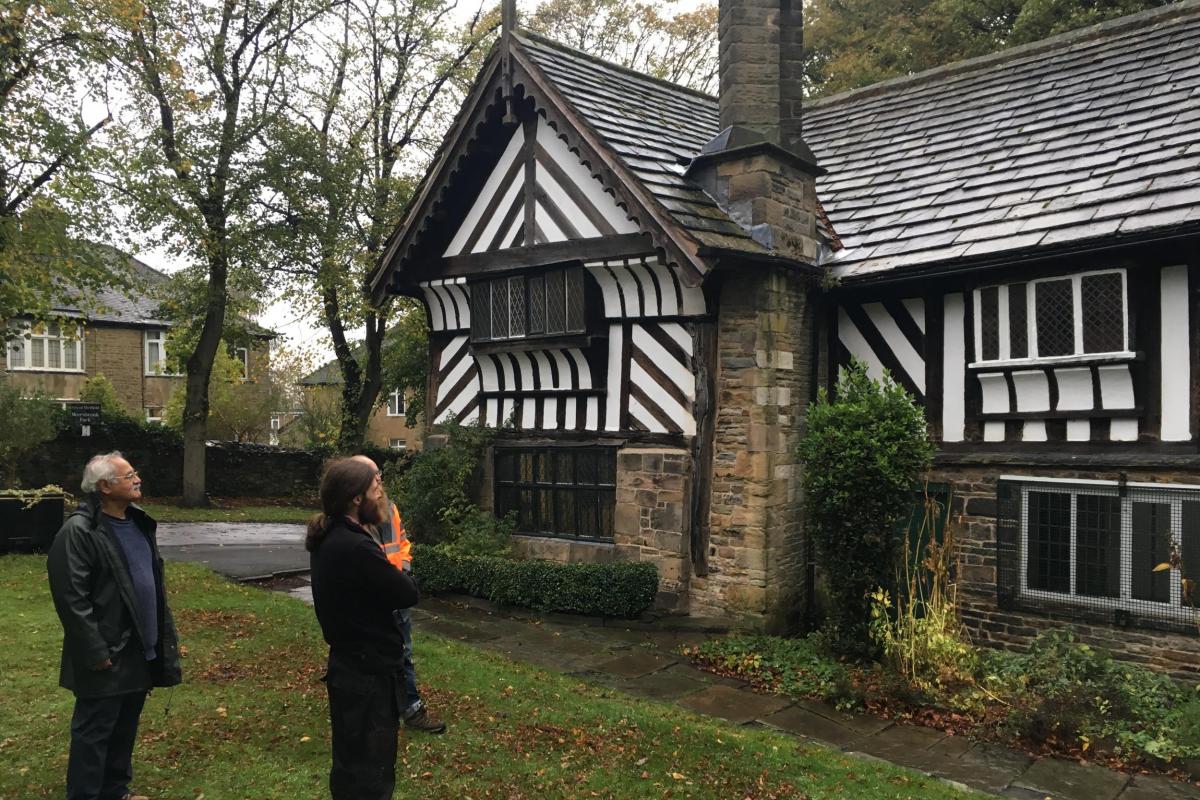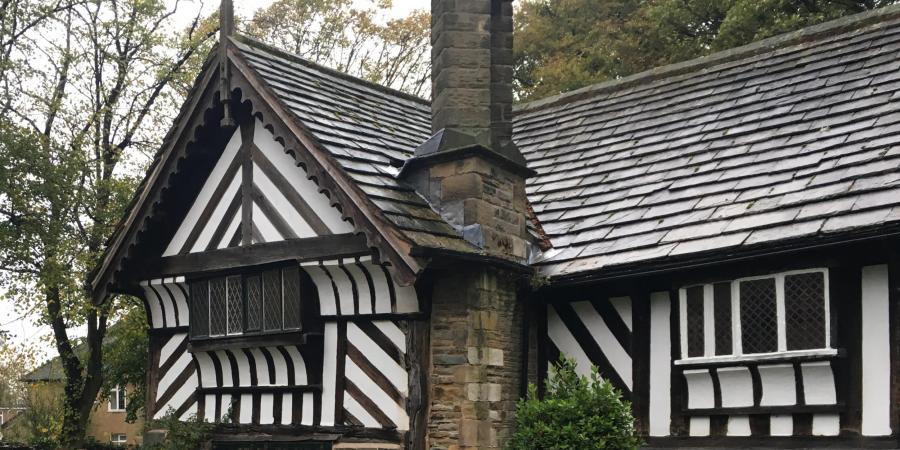Wessex Archaeology was delighted to receive an invitation from Kenneth Dash for the Sheffield Castle team to visit Bishops’ House, a local 16th-century timber framed building thought to have connections to Sheffield Castle. Ken is one of the 30 Friends of Bishops’ House that volunteer their time to manage the historic property.
Bishops’ House is a rare surviving example of Sheffield’s pre-industrial past and started life as farmhouse. The building was thought to have been constructed by the Blythe family in the early 16th century, and contains plasterwork and a window rumoured to have started life at the castle. A later resident, Captain William Blythe, was also part of Parliamentary forces charged with slighting Sheffield Castle in the mid-17th century.
On 15 October Ken kindly showed some of the WA Castle team around the property where we learned that the name Bishops’ House had only recently been shown to be a misnomer. In c. 1500 two members of the Blythe family were prominent local Bishops and these Blythe’s were assumed to have resided in the house. However, recent dendrochronology results showed that the house was built from timbers felled in 1553 and likely to have been constructed the following year. With the construction taking place 50 years later than thought the Blythe Bishops could never have lived here.

Ken Dash explaining the history of Bishops’ House to Ashley Tuck and Jon Whitmore, and the roof (now enclosed) of the earliest part of the building dated to 1553
Sixteenth-century carpentry marks were evident throughout the house, which was demonstrably a fantastic example of early flat pack building. The occupants of the house clearly lived in constant terror with a myriad of protective witch marks evident on all doors and beams, most of which have been identified through Ken’s painstaking work since 2011.
Bishops’ House is located in Norton, which was home to the north’s principal scythe making community, and it is tempting to see a grindstone reused as a padstone as evidence of this medieval activity. The property survived Sheffield’s industrial revolution with the house and surrounding Meersbrook Park owned by Sheffield City Council since 1886. The house was subsequently home to park keepers and their families, amongst whom included Wessex Archaeology’s Brogan Woodward’s great grandad George Wattam and her grandad Joe.
You can read more about Bishops’ House on their website or visit the house in person. With free admission there is no excuse not to visit one of Sheffield’s oldest buildings and meet Ken and the team.
